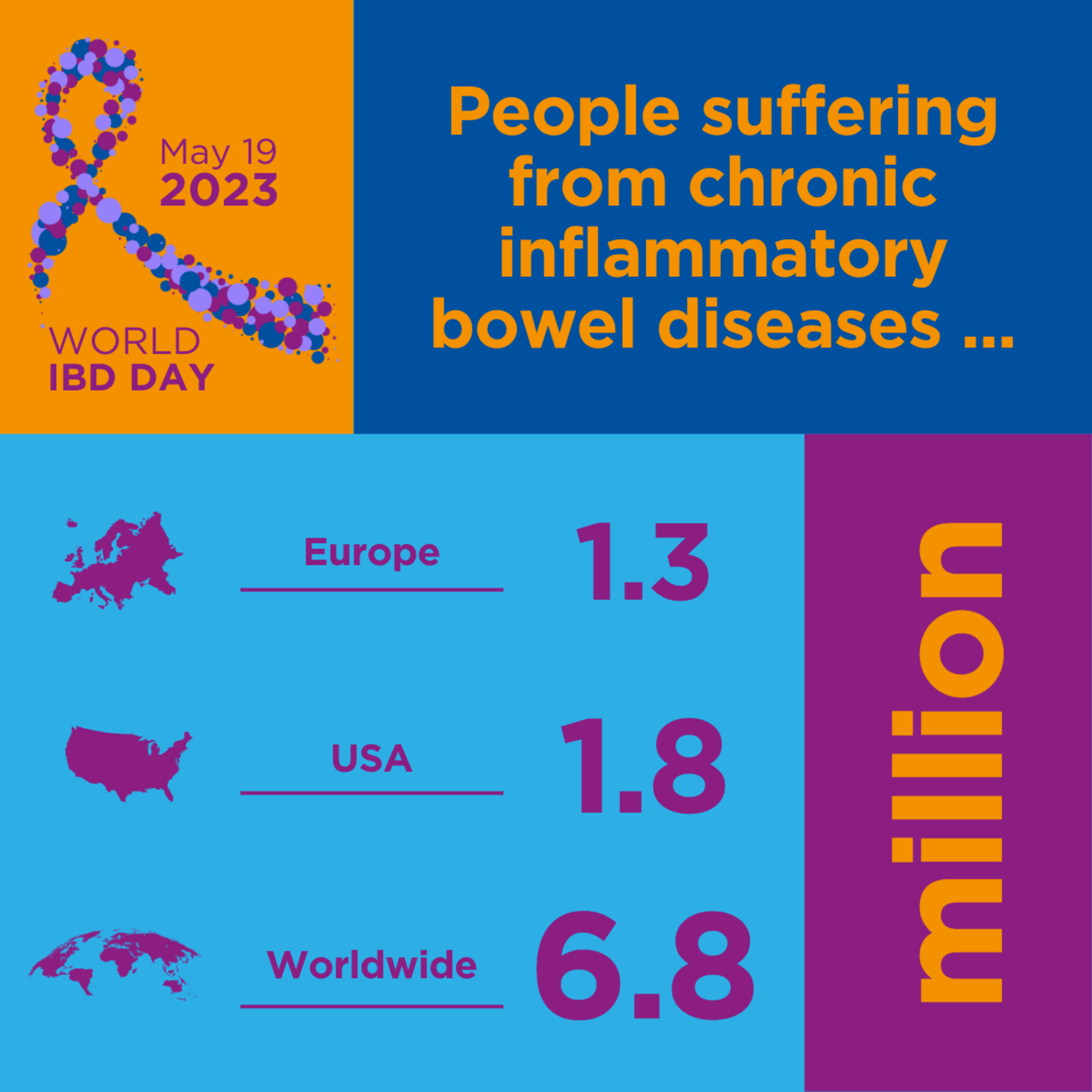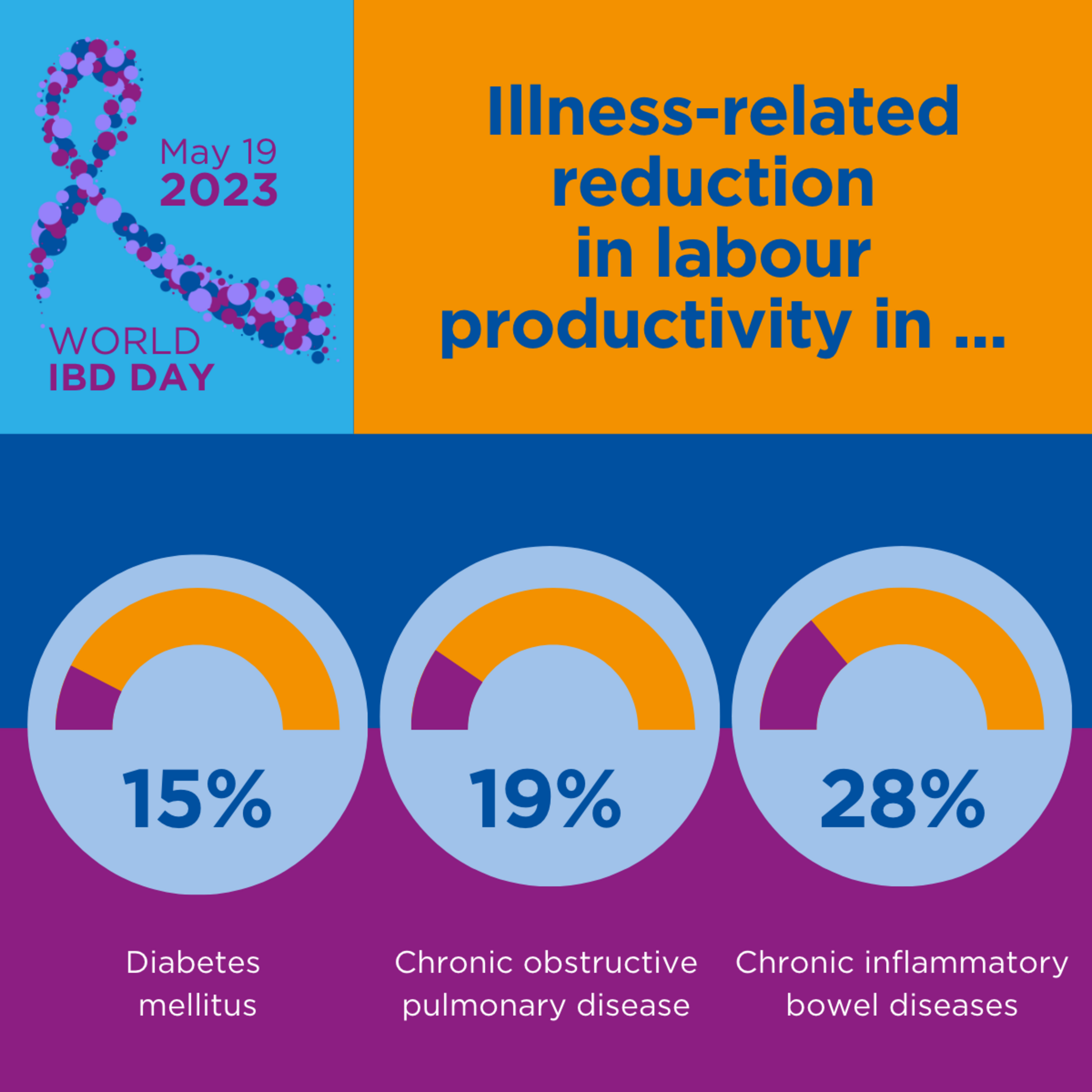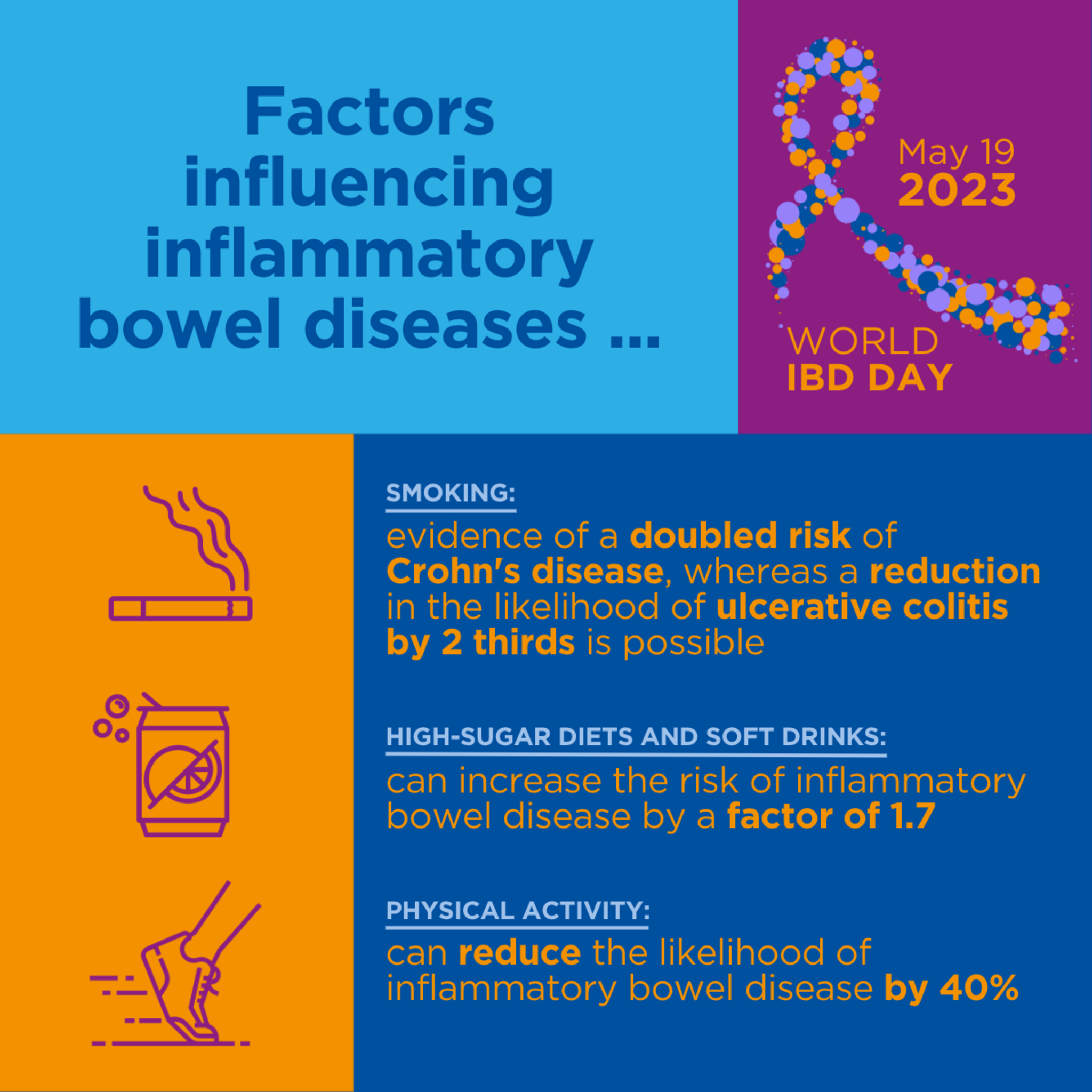Today is World IBD Day!
May 19 is World IBD Day. Inflammatory bowel diseases (IBD) include Crohn’s Disease or Ulcerative Colitis. We have compiled some exciting facts on IBD for you. Test your knowledge about the intestine, the right diet and the symptoms here.
Inflammatory bowel disease (IBD) is characterized by chronic inflammation. Although this inflammation primarily affects the lower part of the digestive tract, the symptoms of these disorders can vary greatly depending on the condition and may also impact other parts of the body.
Ulcerative colitis is one of the IBD disorders. Other disorders within this group of conditions include Crohn’s disease and two forms of microscopic colitis called lymphocytic and collagenous colitis.



IBD Quiz
Test your knowledge by participating in our little quiz and find out interesting facts about inflammatory bowel disease:
Ulcerative colitis
The inflammation caused by ulcerative colitis is restricted to the mucous lining (mucosa) of the large intestine (colon). This inflammation usually starts in the rectum and can spread from there continuously throughout the entire large intestine. However, in most patients this inflammation is limited to the descending colon (the segment located on the left-hand side of the body). Ulcers are common in the affected parts of the intestines. The disease is characterized by alternating phases of active disease (flare-ups) and phases with no symptoms (remission).
Crohn’s disease
Crohn’s disease can affect all sections of the digestive tract, from the mouth to the anus, making it different from the other IBDs that usually affect the large intestine (colon) only.
The typical symptoms of Crohn’s disease are abdominal pain, abdominal cramps, diarrhea, and flatulence. Patients with severe cases may have up to 15 bowel movements per day, with stool that is watery but rarely contains blood. Other common symptoms of Crohn’s disease include a loss of appetite, unwanted weight loss, fever, fatigue, and exhaustion. Patients may also develop malnutrition resulting from the nutrient loss caused by the diarrhea.
Microscopic colitis
Microscopic colitis is characterized by inflammation of the mucosal lining of the large intestine (colitis). While inflammation of the intestines is usually visible in a colonoscopy as redness or other signs of inflammation, this is not the case with microscopic colitis. Instead, the pathological abnormalities of microscopic colitis can only be detected by examining tissue samples (biopsies) under the microscope, which explains the term “microscopic” colitis.
The most important symptom of microscopic colitis is chronic, watery diarrhea that is often accompanied by upper abdominal pain, nausea, flatulence, fatigue, and some degree of weight loss. Many patients also experience diarrhea at night. Blood or mucus in stool are rare.
Quiz references:
[1] Deutsche Gesellschaft für Kinder- und Jugendmedizin (DGKJ). "Mein Kind hat Verstopfung". https://www.dgkj.de/eltern/dgkj-elterninformationen/elterninfo-verstopfung. Retrieved 8. May 2023.
[2] Rinninella E et al. Best practice & Research Clinical Gastroenterology 2023; 62-63: 101828. The role of diet in shaping human gut microbiota - ScienceDirect.
[3] Deutsche Morbus Crohn / Colitis ulcerosa Vereinigung. Endlich eine Diagnose! https://www.dccv.de/fileadmin/public/betroffene_angehoerige/Beratung___Information/Erstbetroffenenbroschuere.pdf. Retrieved 8. May 2023.
[4] Schmülling L. Chronisch entzündliche Darmerkrankungen: Morbus Crohn und Colitis ulcerosa. https://www.springerpflege.de/darmerkrankungen/morbus-crohn/morbus-crohn-colitis-ulcerosa/15577710. Retrieved 8. May 2023.
[5] Österreichische Morbus Crohn / Colitis ulcerosa Vereinigung. 10 Fragen zu CED – wichtige Fakten zu Morbus Crohn und Colitis ulcerosa. https://www.oemccv.at/single-post/10-fragen-zu-ced-wichtige-fakten-zu-morbus-crohn-und-colitis-ulcerosa. Retrieved 8. May 2023.
[6] Ng SC et al. Lancet 2017; 390: 2769-78.
[7] Mak WY et al. J Gastroenterol Hepatol 2020; 35(3): 380-389.


